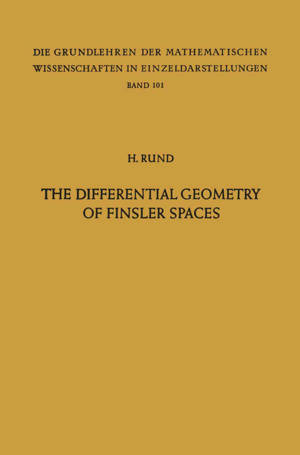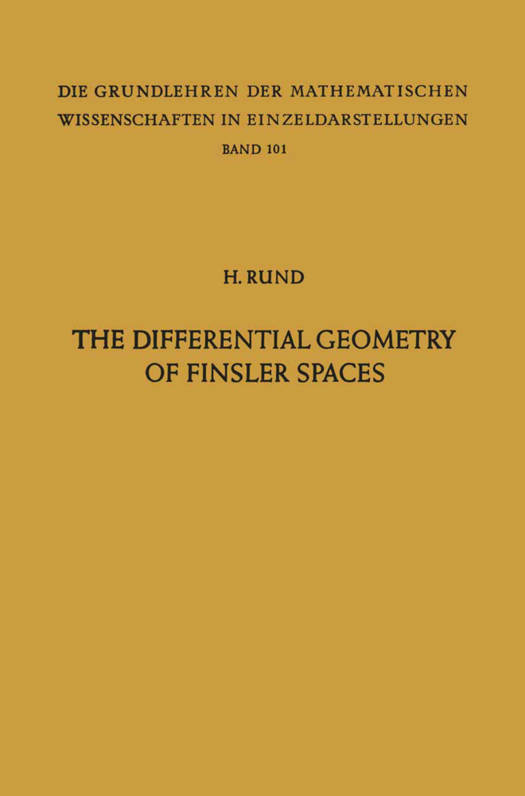
- Afhalen na 1 uur in een winkel met voorraad
- Gratis thuislevering in België vanaf € 30
- Ruim aanbod met 7 miljoen producten
- Afhalen na 1 uur in een winkel met voorraad
- Gratis thuislevering in België vanaf € 30
- Ruim aanbod met 7 miljoen producten
Zoeken
Omschrijving
The present monograph is motivated by two distinct aims. Firstly, an endeavour has been made to furnish a reasonably comprehensive account of the theory of Finsler spaces based on the methods of classical differential geometry. Secondly, it is hoped that this monograph may serve also as an introduction to a branch of differential geometry which is closely related to various topics in theoretical physics, notably analytical dynamics and geometrical optics. With this second object in mind, an attempt has been made to describe the basic aspects of the theory in some detail - even at the expense of conciseness - while in the more specialised sections of the later chapters, which might be of interest chiefly to the specialist, a more succinct style has been adopted. The fact that there exist several fundamentally different points of view with regard to Finsler geometry has rendered the task of writing a coherent account a rather difficult one. This remark is relevant not only to the development of the subject on the basis of the tensor calculus, but is applicable in an even wider sense. The extensive work of H. BUSEMANN has opened up new avenues of approach to Finsler geometry which are independent of the methods of classical tensor analysis. In the latter sense, therefore, a full description of this approach does not fall within the scope of this treatise, although its fundamental l significance cannot be doubted.
Specificaties
Betrokkenen
- Auteur(s):
- Uitgeverij:
Inhoud
- Aantal bladzijden:
- 284
- Taal:
- Engels
- Reeks:
- Reeksnummer:
- nr. 101
Eigenschappen
- Productcode (EAN):
- 9783642516122
- Verschijningsdatum:
- 19/05/2012
- Uitvoering:
- Paperback
- Formaat:
- Trade paperback (VS)
- Afmetingen:
- 156 mm x 234 mm
- Gewicht:
- 426 g

Alleen bij Standaard Boekhandel
+ 206 punten op je klantenkaart van Standaard Boekhandel
Beoordelingen
We publiceren alleen reviews die voldoen aan de voorwaarden voor reviews. Bekijk onze voorwaarden voor reviews.











